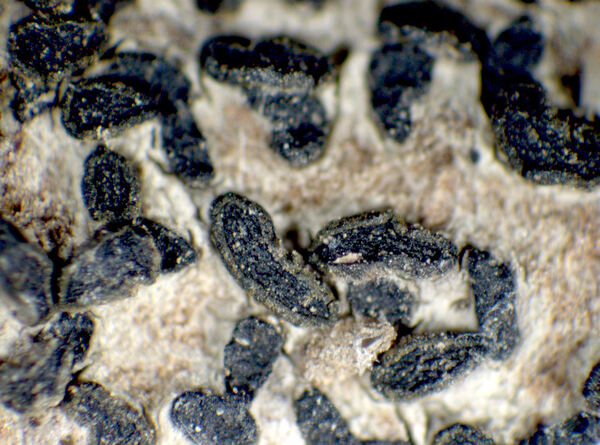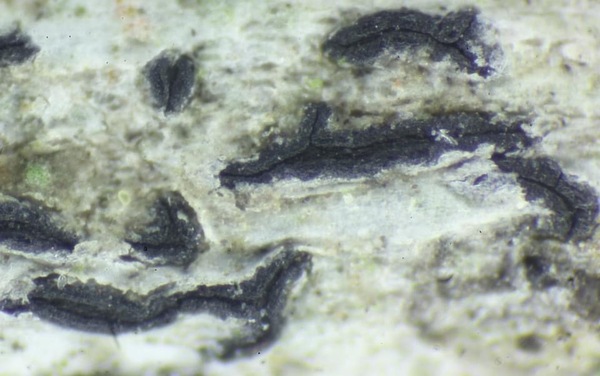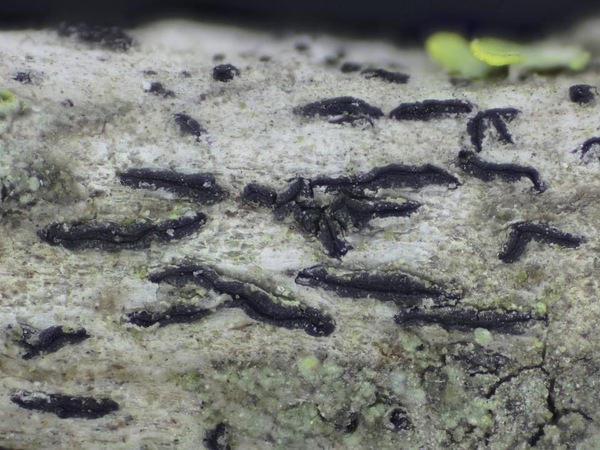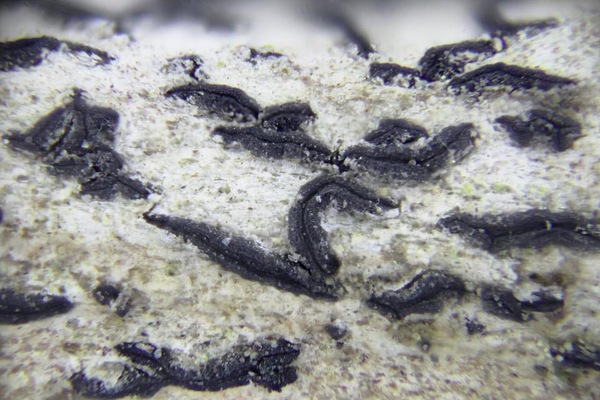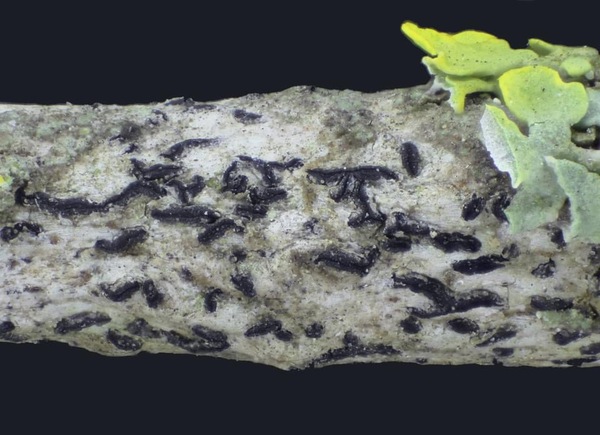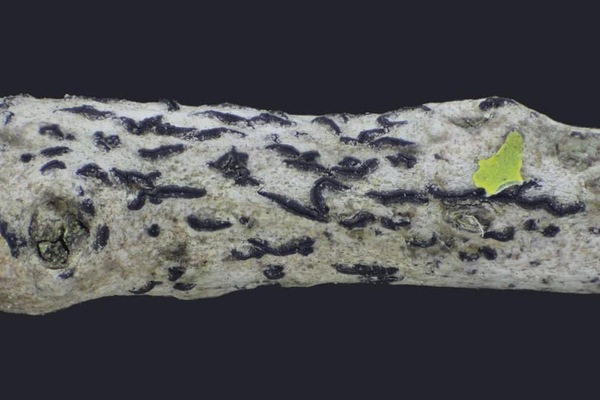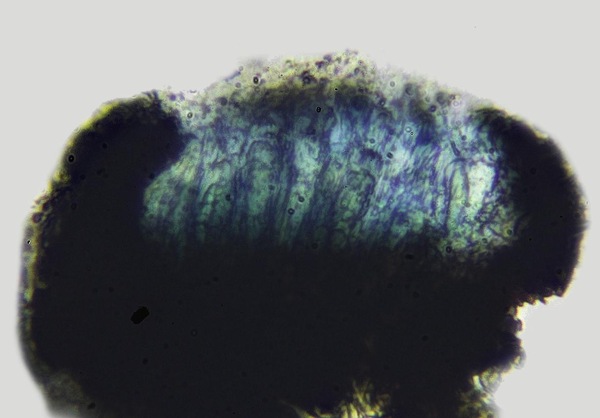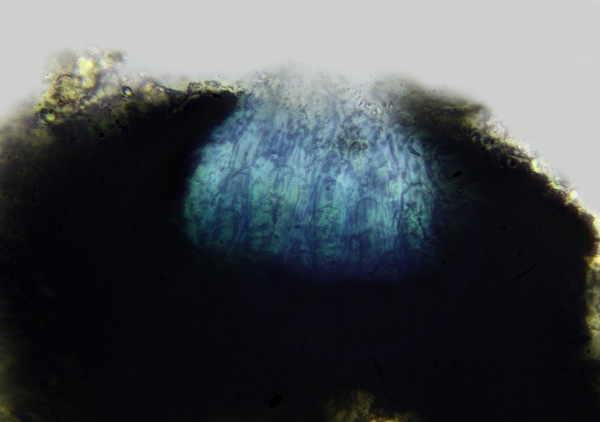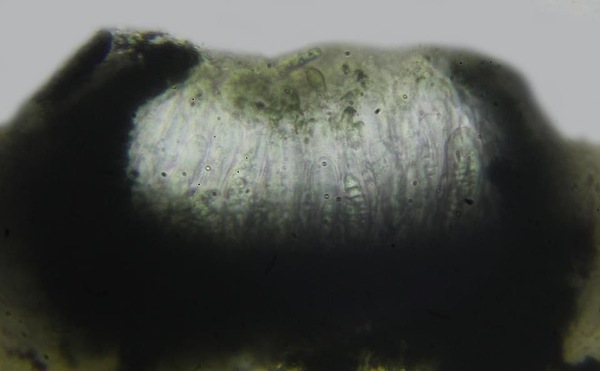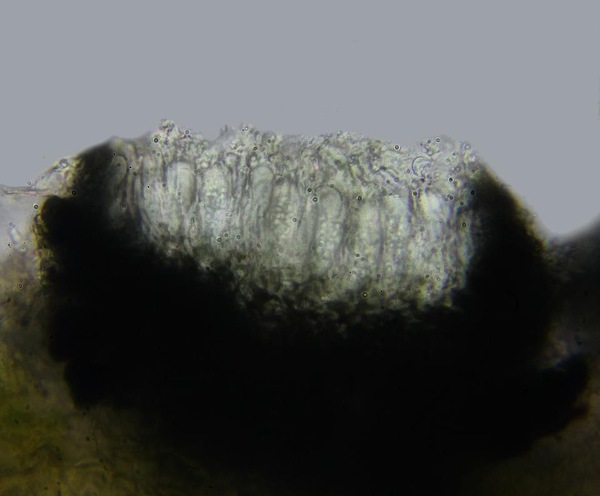Alyxoria ochrocincta (Werner) Ertz
in Diederich & al., Bull soc. nat. Luxemb., 113: 105, 2012. Basionym: Opegrapha ochrocincta Werner - Bull. Soc. Sc. Nat. Maroc, 19, 1: 46, 1939.
Synonyms: Opegrapha diaphoroides auct. non Nyl.
Distribution: N - Lig. C - Tosc (Putortì & Loppi 1999), Laz, Abr (Nascimbene & al. 2021), Sar. S - Pugl (Nimis & Tretiach 1999, Durini & Medagli 2004), Bas (Nimis & Tretiach 1999), Cal (Nimis & Puntillo 2003, Puntillo 2011), Si (Nimis & al. 1994).
Description: Thallus crustose, endosubstratic or thinly episubstratic, continuous to rimose-areolate, grey to brownish, sometimes with a reddish brown pruina, especially around the apothecia. Apothecia lirelliform, emergent, broadly ellipsoid to sublinear, 0.5-1.2 x 0.3-0.4 mm, usually simple, with an expanded, black but often white-pruinose disc, and a raised, black but often reddish-pruinose proper margin. Proper exciple black, carbonized, extending below the hymenium; epithecium dark brown, with darker granules; hymenium colourless, 60-75 mm high, I+ blue; paraphysoids branched and anastomosing, 1.5-1.7 μm thick, the apical cells hardly swollen; subhymenium reddish brown, 15-25 mm high, hypothecium black, carbonized. Asci 8-spored, cylindrical-clavate, the inner layer of endoascus amyloid in upper part, with a I+ blue ring visible around a small ocular chamber, Varia-type. Ascospores 3(-4)-septate, hyaline (overmature spores often brownish), ellipsoid, 12-18(-22) x 3-4(-5) μm, with a 0.2-0.5 μm thick, gelatinous perispore. Pycnidia black, sometimes reddish-pruinose at top, immersed. Conidia straight, 4-6(-7) x c. 1 μm. Photobiont trentepohlioid. Spot tests: thallus K-, C-, KC-, P-; reddish pruina of apothecia, pycnidia and thallus K+ red, UV+ orange. Chemistry: unknown pigments in the reddish pruina.Note: a Mediterranean species growing on shrubs and twigs of young trees in Mediterranean maquis, more rarely on trunks, in rather shaded and humid situations, most frequent in Tyrrhenian Italy.
Growth form: Crustose
Substrata: bark
Photobiont: Trentepohlia
Reproductive strategy: mainly sexual
Most common in areas with a humid-warm climate (e.g. most of Tyrrenian Italy)
Commonnes-rarity: (info)
Alpine belt: absent
Subalpine belt: absent
Oromediterranean belt: absent
Montane belt: absent
Submediterranean belt: extremely rare
Padanian area: absent
Humid submediterranean belt: extremely rare
Humid mediterranean belt: rare
Dry mediterranean belt: extremely rare

Predictive model
Herbarium samples
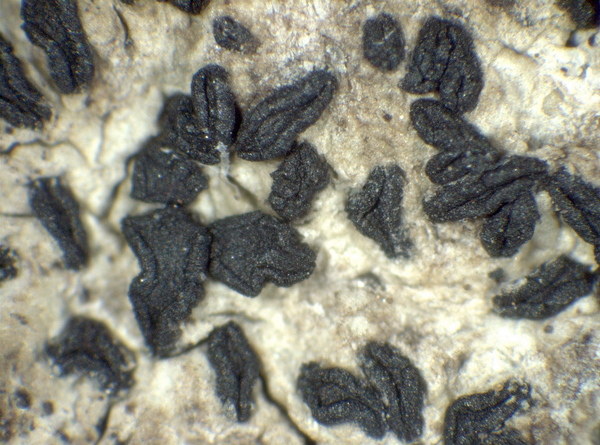

P.L.Nimis; Owner: Department of Life Sciences, University of Trieste
Herbarium: TSB (38298)
2008.02.23

Giulio Pandeli
Italy, Toscana, Prov. Livorno, coastal dunes with Juniperus
17.05.2021
lactophenol cotton blue

Manuel Gil
Spain, Canary Islands, Tenerife
Corticícola. Esporas c. 12 x 3,5 mic. Conidios c. 5 mic. de largo.

Manuel Gil
Spain, Canary Islands, Tenerife
Corticícola. Esporas c. 12 x 3,5 mic. Conidios c. 5 mic. de largo.
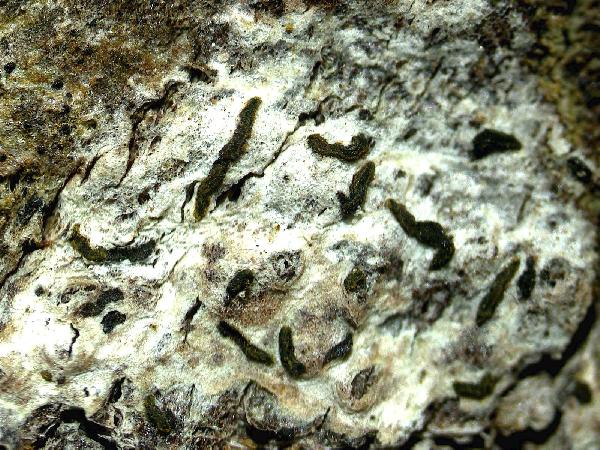
Manuel Gil
Spain, Canary Islands, Tenerife
Corticícola. Esporas c. 12 x 3,5 mic. Conidios c. 5 mic. de largo.
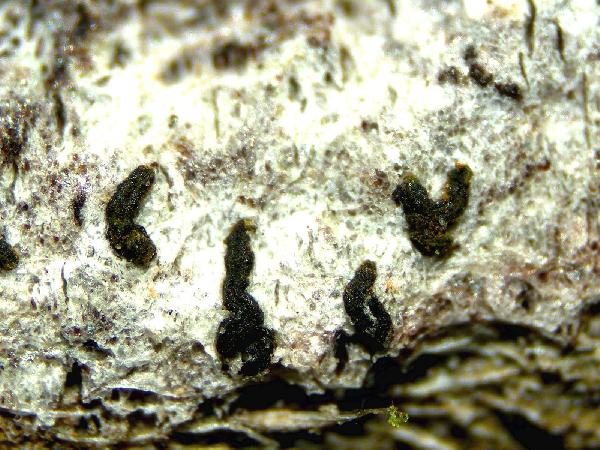
Manuel Gil
Spain, Canary Islands, Tenerife
Corticícola. Esporas c. 12 x 3,5 mic. Conidios c. 5 mic. de largo.

Manuel Gil
Spain, Canary Islands, Tenerife
Corticícola. Esporas c. 12 x 3,5 mic. Conidios c. 5 mic. de largo.
Growth form: Crustose
Substrata: bark
Photobiont: Trentepohlia
Reproductive strategy: mainly sexual
Most common in areas with a humid-warm climate (e.g. most of Tyrrenian Italy)
Commonnes-rarity: (info)
Alpine belt: absent
Subalpine belt: absent
Oromediterranean belt: absent
Montane belt: absent
Submediterranean belt: extremely rare
Padanian area: absent
Humid submediterranean belt: extremely rare
Humid mediterranean belt: rare
Dry mediterranean belt: extremely rare

Predictive model
| Herbarium samples |


P.L.Nimis; Owner: Department of Life Sciences, University of Trieste
Herbarium: TSB (38298)
2008.02.23

Giulio Pandeli
Italy, Toscana, Prov. Livorno, coastal dunes with Juniperus
17.05.2021
lactophenol cotton blue

Manuel Gil
Spain, Canary Islands, Tenerife
Corticícola. Esporas c. 12 x 3,5 mic. Conidios c. 5 mic. de largo.

Manuel Gil
Spain, Canary Islands, Tenerife
Corticícola. Esporas c. 12 x 3,5 mic. Conidios c. 5 mic. de largo.

Manuel Gil
Spain, Canary Islands, Tenerife
Corticícola. Esporas c. 12 x 3,5 mic. Conidios c. 5 mic. de largo.

Manuel Gil
Spain, Canary Islands, Tenerife
Corticícola. Esporas c. 12 x 3,5 mic. Conidios c. 5 mic. de largo.

 INDEX FUNGORUM
INDEX FUNGORUM
 GBIF
GBIF

